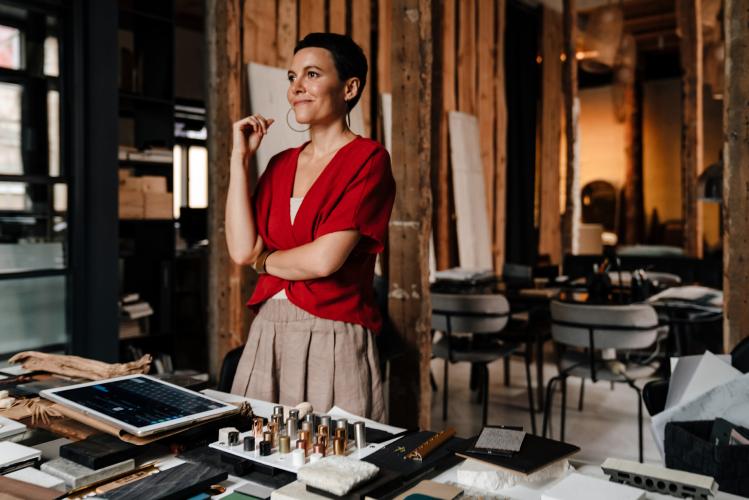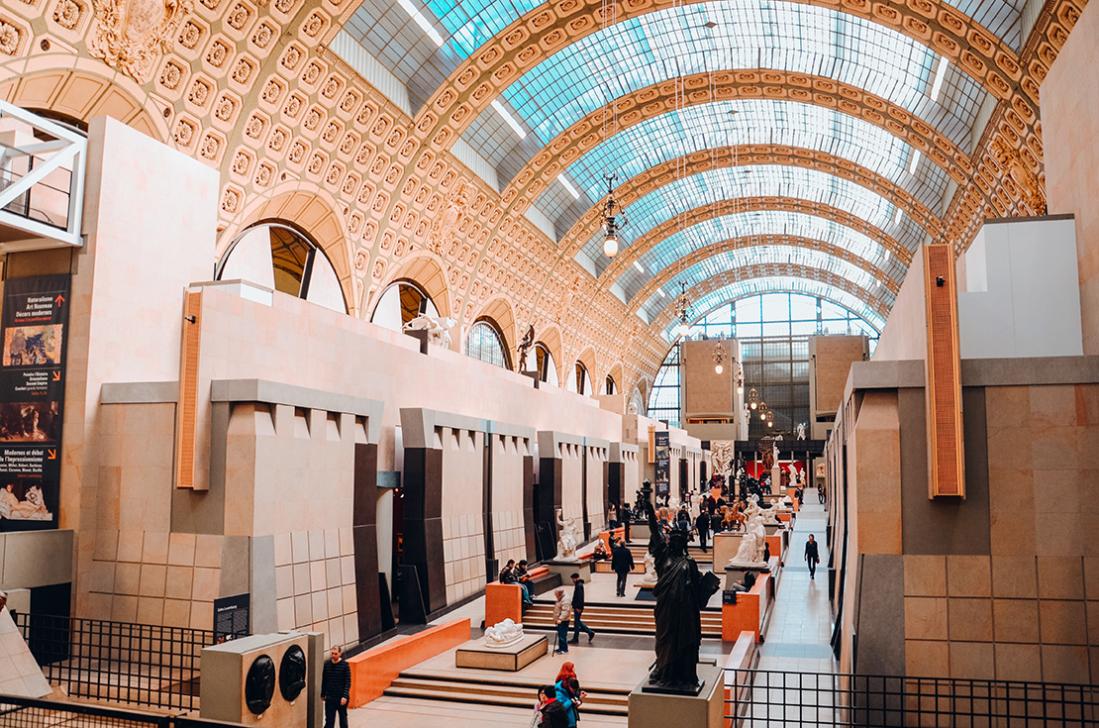

From the meticulously designed tombs of ancient Egypt to the thoughtfully planned office spaces of today, interior design has always been a versatile discipline. Throughout its history, the core purpose has remained constant: to shape functional and comfortable spaces that cater to the occupants' needs.
While aesthetics has undoubtedly played a role, humans have always strategically arranged furniture and utilized natural light sources to optimize their living areas. The placement of hearths and sleeping areas within homes reflected a deep understanding of spatial flow and the need for warmth and safety. This focus on functionality, even in the most basic sense, laid the foundation for developing interior design into the complex and influential field it is today.
Today, however, advancements in materials, construction methods, and integrated technology are propelling interior design, also referred to as interior architecture, forward into incredible new avenues of problem-solving. High-performance fabrics, sustainable materials, and innovative furniture designs are allowing for the creation of spaces that are not only beautiful but also environmentally responsible and adaptable to evolving needs.
Let's delve into some aspects of interior design that play a vital role in shaping the experience of a space.
The psychology of space:
Effective interior design involves having an understanding of psychological principles that can greatly influence the way people experience and interact with their surroundings. By considering factors such as human behavior, emotions, and cognitive processes, designers can create spaces that are not only visually appealing but also conducive to well-being.
One key psychological principle that informs interior design is the concept of environmental psychology, which studies how our physical environment affects our thoughts, feelings, and behaviors. For example, the use of natural elements like wood or plants can evoke a sense of tranquility and connection to nature, while incorporating bright colors can stimulate energy and creativity.
The principle of spatial perception also plays a crucial role in design. The arrangement of furniture and architectural elements can influence how people navigate and interact within a space, as well as how someone perceives its size and proportions. By strategically placing objects and creating clear pathways, designers can enhance flow and functionality while also creating a sense of balance and harmony.
Color psychology:
A fascinating aspect of interior design, color psychology delves into how different colors can impact emotions and moods. Each color has its own psychological associations, with warm tones like red and orange often evoking feelings of energy, passion, and warmth, while cool tones like blue and green are known for their calming and soothing effects.
For example, a room painted in a soft blue hue may promote relaxation and tranquility, making it an ideal choice for a bedroom or meditation space. On the other hand, a vibrant yellow accent wall can inject a sense of joy and optimism into a living room or workspace.
By strategically incorporating various colors into a space, designers can create atmospheres that cater to specific emotions and activities. Whether it's using earthy tones for a grounded and nurturing feel or bold pops of color for a dynamic and stimulating environment, the possibilities are endless when it comes to harnessing the power of color in interior design.
Trends and innovations:
Current trends in interior design focus on well-being by applying sustainability practices, biophilic design, and smart technology. Sustainable design practices, such as using eco-friendly materials and incorporating energy-efficient systems, are gaining popularity as people become more environmentally conscious. Biophilic design, which integrates natural elements like plants and natural light into indoor spaces, is also on the rise due to its proven benefits for mental and physical well-being.
Smart technology is another trend that is revolutionizing interior design, with features like smart lighting, automated blinds, and voice-controlled assistants becoming increasingly common in homes and commercial spaces. These innovations not only enhance convenience and efficiency but also contribute to creating a more connected and functional environment.
In terms of emerging innovations, virtual reality (VR) and augmented reality (AR) are poised to revolutionize the way designers conceptualize and present their ideas. With VR technology, clients can experience a space in 3D before it is even built, allowing for better decision-making and visualization. AR, on the other hand, enables designers to overlay digital elements onto the physical environment, offering endless possibilities for customization and personalization.
The power of design in different environments
While it is true most associate interior design with homes, skilled designers do play a vital role in shaping a wide range of environments, each with its unique set of considerations.
- Healthcare facilities: Interior design plays a crucial role in promoting patient well-being and recovery in healthcare settings. Designers create calming and healing environments by incorporating elements like natural light, biophilic design (incorporating nature), and layouts that promote patient privacy and dignity.
- Educational institutions: Well-designed classrooms can significantly enhance the learning experience. Interior designers incorporate elements that promote focus and collaboration, such as flexible furniture layouts, proper lighting for reading, and designated areas for group work.
- Workplaces: A thoughtfully designed office fosters employee productivity, well-being, and collaboration. Designers create workspaces that cater to different work styles by incorporating areas for focused work, collaborative brainstorming sessions, and relaxation breaks.
An interior design case study: The Musée d'Orsay in Paris, France
The Musée d'Orsay (Orsay Museum) in Paris, France is an incredible example of the power of interior design! Originally constructed in 1900 as a train station and hotel in the center of Paris, called the Gare d'Orsay (Orsay Train Station), the impressive building wasn't immediately suitable to house an impressive collection of the finest art in the world.
When it was converted into a museum in the 1970s, the interior had to be completely reimagined. Here's how interior design played a key role in this transformation:
- Preserving the grandeur: Rather than segmenting the entire space into enclosed exhibition rooms, the station's impressive expansive main hall was preserved. This grand space provided an awe-inspiring backdrop for displaying large-scale artwork.
- Creating functional galleries: Exhibition spaces were created on multiple floors alongside the main hall. Italian designer Gae Aulenti used similar stone flooring and walls throughout, creating a sense of unity and allowing the artwork to take center stage providing an enriching experience for visitors.
- Integrating natural light: Aulenti also ensured natural light played a significant role by incorporating skylights and strategically placing the galleries to maximize the use of the existing glass roof. Artificial lighting was carefully designed to complement the natural light and showcase the artwork effectively.
The traditional approach to earning an interior design degree
What degree do you need to be an interior designer? One option involves obtaining a degree from an interior design school on a university campus. These programs typically last four years and provide a foundation in design principles, space planning, building codes, materials and finishes, color theory, and computer-aided design (CAD) software.
This might not be ideal for everyone with busy work and life schedules. An online option might offer more flexibility.
Design your future with OHIO Online
The growing popularity of online education has opened new opportunities for those looking to learn how to become an interior designer.
OHIO Online’s Interior Architecture degree leverages technology and the virtual studio concept to prepare future designers for success in the 21st century in residential and non-residential settings. You'll develop an understanding of how architectural elements interact, enabling you to design spaces that cater to the physical, psychological, social, and intellectual well-being of people in a variety of contexts.
Whether you're a working professional seeking a career change or a high school student thriving in online environments, OHIO Online offers a compelling alternative to the traditional on-campus experience. This fully online program provides exceptional flexibility:
- Tailored pace: Choose full or part-time enrollment with terms starting three times a year (Fall, Spring, Summer).
- Accelerated options: Graduate sooner by enrolling in a full summer course schedule.
- Immersive learning: Most classes are offered in intensive 7-week sessions, allowing you to focus deeply on a smaller course load.
If you are looking for a career that offers a unique blend of creativity, problem-solving, and technical knowledge, the interior design field presents a rewarding career path. Learn more about how OHIO’s online interior design degree program can help you turn your design dreams into reality.

